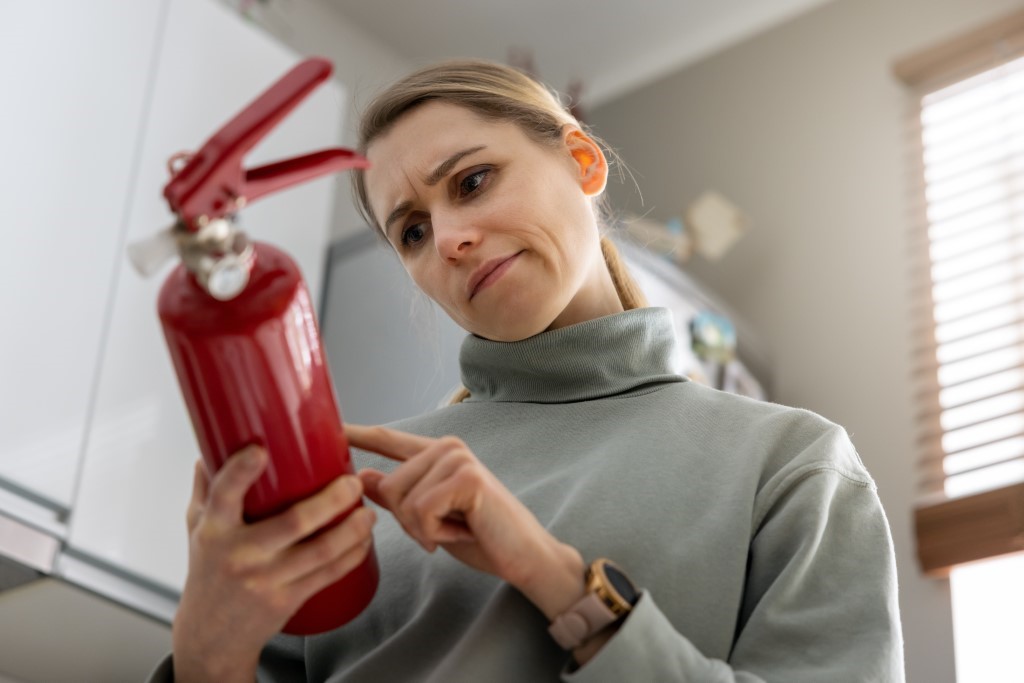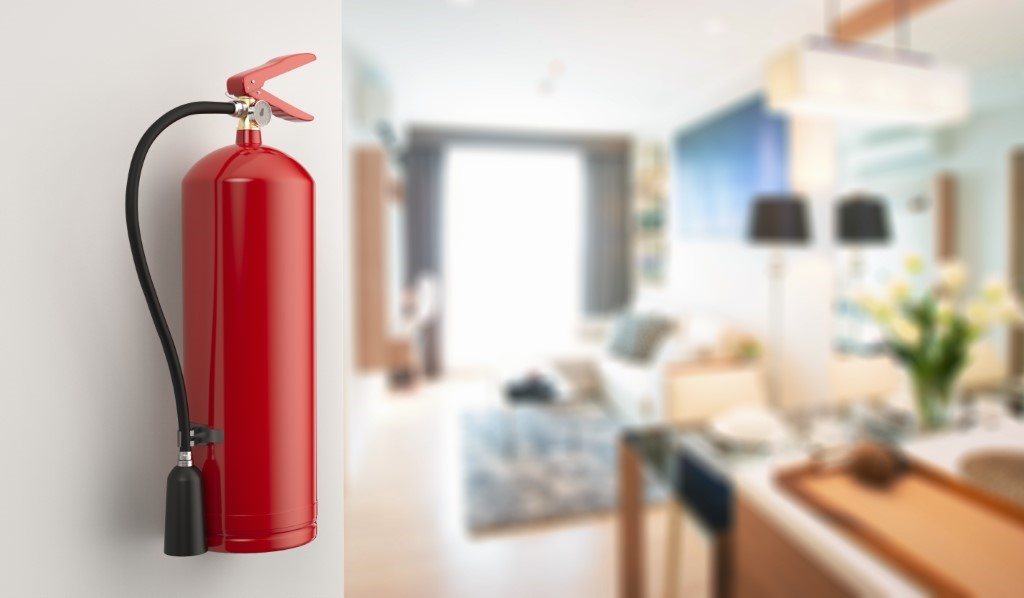Fires can cause severe damage to anything in their path and, in some cases, even fatalities. These incidents become more dangerous in smaller spaces, such as apartments.
Landlords are required to supply fire extinguishers in apartments to prevent a fiery disaster. Having one nearby could spell the difference between life and death.
The issue lies with knowing how to use it and staying safe while using it. If you’re an apartment dweller, this piece is for you. Learning and understanding fire extinguisher safety is crucial to protect your home and yourself.
Know What Kind of Fire Extinguisher You Have
Fire extinguishers typically come in a bright red canister with an extended nozzle. But did you know that there are various kinds of fire extinguishers? These are the common types you’ll encounter:
- Dry chemical
- Dry powder
- Wet chemical
- Dry water mist
- Water
- Aqueous Film Forming Foam (AFFF) foam
- Carbon dioxide
The types are often indicated through colored bands around the canister. Color codes may vary across countries, so learn what they signify depending on where you live.
Whatever the type you have in your apartment, ensure it’s legitimate and from reputable providers. A good fire extinguisher is manufactured following local safety standards and regulations.
Understand the Different Classes of Fire
Fires are classified and vary by country. In the U.S., there are five in total, from A to K. These fire classes help firefighters and other emergency services know the best way to control the flames.
Class A Fire
Class A fires are considered ordinary combustibles. Ordinary combustibles are materials that you’ll usually find around the house. They’re common fuels for house fires.
Some typical examples of ordinary combustibles include:
- Paper
- Wood
- Cloth
- Plastic
- Rubber
You can extinguish class A fires with dry chemicals or water. And since homes and apartments commonly have ordinary combustibles, experts recommend getting a fire extinguisher with at least an AB rating. Consider looking for an apartment built with fire-retardant plywood for extra safety.
Class B Fire
Flammable gases and liquids fall under class B fires. Hence, they’re common in garages and workshops where these flammable items are typically found. However, a class B fire may also occur in homes that use natural gas for heat or have an alcohol cabinet.
Flammable liquids include:
- Alcohol
- Most oils
- Most paints
- Gasoline
Meanwhile, flammable gases include:
- Butane
- Hydrogen
- Ethylene
- Methane
Dry chemical and foam fire extinguishers are ideal for class B fires. Halon was commonly used in the 1990s until experts discovered it affected the ozone layer.
Class C Fire
Electrical sparks are a common cause of household fires, which are considered class C fires. Home equipment and appliances like space heaters, clothes dryers, and poorly installed wiring could cause this type of fire.
A dry chemical fire extinguisher is the best against small electrical fires. Water is not a smart idea, as it’s an electrical conduit.
Class D Fire
Some metals are combustible; if they become fuel for a fire, they’re classified as a class D fire. They usually have a high flash point and require exposure to vast amounts of heat to catch fire. But some, like sodium, can burn upon contact with air or water.
Besides sodium, lithium is another common combustible metal. You’ll find it inside smartphones and laptops.
Dry powder is great against class D fires. Fire extinguishers of this type absorb heat and separate combustible metals from oxygen sources.
Class K Fire
Lastly, you have a class K fire, which involves cooking grease, fats, and oils. However, this would be a class F in places like Australia and Europe.
Foam fire extinguishers can suppress a class K fire. Water may also help, but it must be in mist form.
Restaurants and industrial kitchens should have a class K extinguisher nearby since they’re most prone to this type of fire. Unless you store a lot of cooking oil in your apartment, you typically need a class A fire extinguisher.
Correct Placement Matters
Your landlord might provide a fire extinguisher per apartment unit and put them in the right spots. But if they don’t, you must transfer them somewhere you can easily access.
The National Fire Protection Association (NFPA) has guidelines on where to put an extinguisher in your home. Kitchens are at high risk for fires. Consider putting a BC fire extinguisher nearby. And keep the area clean at all times to prevent a kitchen fire.
Utility or laundry rooms may also be prone to fires due to their electrical appliances. Lint, common in dryers, is also an excellent fuel for fire. Clean your dryer out regularly and ensure you have an ABC extinguisher in your laundry room for safety.
How to Use a Fire Extinguisher Correctly

You must know how to use a fire extinguisher, or you might be unable to put a fire out properly.
Extinguishers may look complicated, but they’re quite easy to manipulate. Just remember the acronym PASS, which stands for:
- Pull the handle’s pin out.
- Aim the extinguisher’s nozzle at the flame’s base.
- Squeeze or tightly press the handles to dispense the extinguisher contents.
- Sweep the extinguisher nozzle from side to side while aiming at the flame’s base.
Your local fire departments might hold occasional workshops on fire safety, so consider attending one. You’ll learn how to protect your residence from fires and participate in fire extinguisher training. Otherwise, you can also learn the right techniques through video tutorials.
Conclusion
Fire management is possible when you understand fire extinguisher types, classifications, and safety protocols. This becomes all the more important when living in an apartment due to the limited space.
In case of an apartment fire, stay calm, grab your nearest extinguisher, and use it immediately before the flames grow. Whether the fire dies down or not, call the fire department for professional help. Your safety, and that of your apartment neighbors, matters.

